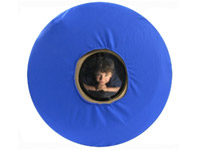
Hyperbaric Oxygen Chamber Articles
Alzheimer’s disease is a degenerative and presumably incurable form of dementia. The German psychiatrist Alois Alzheimer discovered it in 1906, and since then, the number of individuals diagnosed with the disease has progressively increased. This disease is common in adults aged 65 and above. As of 2006, 26.6 million people have been identified as individuals with Alzheimer’s. And it is estimated that this number may increase in four-folds come 2050.
While it is a fact that each Alzheimer’s patient experiences the disease in differently from another, there are common symptoms. The most obvious and easily observable is memory loss. This, though, is commonly confused with “age-related” concerns or simply as manifestations of stress.
Once the disease advances, later-stage symptoms are made evident in disorientation, irritability, mood swings, language deterioration, and irrational aggression. The worst of these symptoms occur when the patient’s senses decline, loss of long-term memory, and eventually the loss of mobility and bodily functions leading to death.
Alzheimer’s is no walk in the park I know, and it is a disease that we do not wish to befall on us, to our loved ones, or to anyone, for that matter. And the good thing about the 21st century is that we are now given the avenue to look into the most fearsome of diseases and find a way to stop it. The hyperbaric oxygen chamber treatment (HBOT) is one such avenue provided by science.
HBOT is one of the modern medical alternatives that can help avoid and possibly cure Alzheimer’s. This treatment espouses the use of oxygen at a higher than atmospheric pressure. HBOT is already reknowned for its positive effects on brain damage and head injuries as the treatment works by successfully replenishing and healing damaged brain cells.
The same theory is applied to the approach on the treatment and prevention of Alzheimer’s. A study lead by Dr. Paul G. Harch shows the administration of HBOT to a dementia patient for over a course of two moths. This resulted with the patient resuming independent living and stayed so. The patient was said to have experienced improved cognitive functions three years after the diagnosis. HBOT effectively slowed the progression of the disease. That patient has lived an Alzheimer’s disease-free life for four more years.

